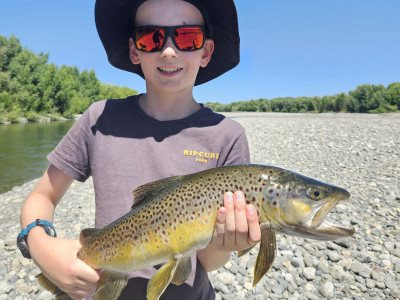Reel Life
Keep up to date with all the freshwater fishing action, news, events and comment from across New Zealand by signing up to 'Reel Life' - the official monthly newsletter from Fish & Game New Zealand.
Fish & Game New Zealand believes that email is an important way to communicate regular news, important and timely updates and calls to action. Please help us ensure we can communicate directly with you by signing up for our newsletter(s) using the form below.
Privacy Policy: Your details will at all times be used only for the express purpose of Fish & Game New Zealand email communications and will never be disclosed to a third party.
Please select the region's link on the right to view their newsletters.

Reel Life March 2024
The reports from around the country tell us that there has been some fantastic fish caught recently.
- 22/03/2024